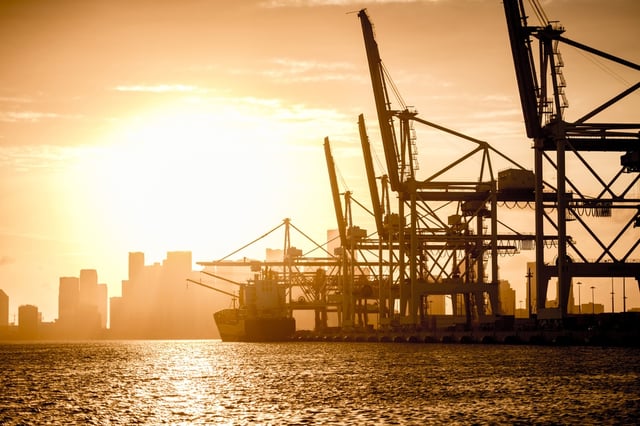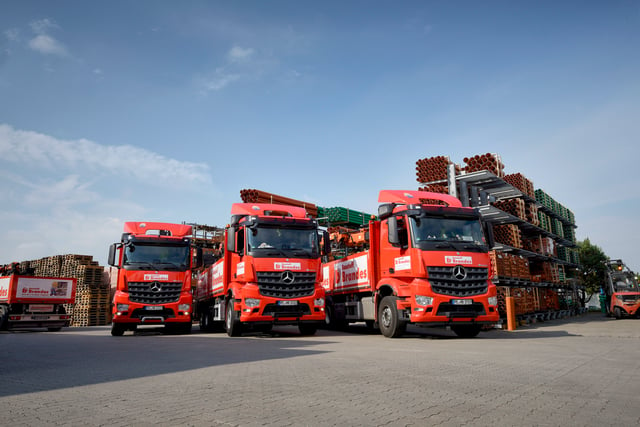Impact of 3D to Anticipate for Printing Logistics
For several years, industrial production has been using 3D Printing to drive quicker prototyping and product development. Nowadays, 3D Printing makes it possible to decentralize production, causing a disruption of the supply chain and forcing the logistic companies to adapt their business model.
Those businesses who have incorporated 3D technology are already beginning to reap the rewards as the technology matures. In particular, the benefits are coming from a shift towards decentralization and the opening of a new market for mass-customization. Both stand to create a large shift in the Logistics sector by shifting the focus from internationally shipping large batches of products to efficient, just-in-time shipping of raw materials and regional supply chains.
Shifting the Focus of Logistics
DHL explains in a recent article how 3D printing will play a central role in the way that logistics will be conceived in the near future. As the tendency to use industrial 3D printing for final and functional products increases, it will trigger an important restructuring of production. Manufacturers will benefit by shortening the distances (cost and time), and therefore reducing the time of their products to market and efficient, localized manufacturing. Companies servicing logistics will need to focus on local transport networks to accompany the reshoring process.

“The worst that can happen to a logistician is: Everything is already where it is needed. [...] We are still a long way from teleportation, and logisticians are still needed. Of course we’ve already seen that customers manufacture individual components additively and need us to a different extent for transport and storage.”
Interview of Erik Wirsing, Vice President Global Innovation at Schenker AG
How to Shift back from Global to Local
The move towards decentralized manufacturing is spurred on by two primary factors that directly challenge the logistics industry: instant transfer of data instead of products and production process improvements that enable distributed production locations. AM manufacturing moves every year to improve quality standardization, reduce risk, reducing labor costs and using software to streamline communication processes. As these problems are solved, the door opens to distributed production locations.

This has an import implication for Logistics. On the internal production demand side, the shortened delivery distances will make it important to develop condensed, efficient networks. Logistics will become essential to the efficient system by moving raw materials to locations where it is required for production as well as shipping components that are produced in a distributed fashion to a single location for final assembly. This will open up potential to shift towards electric vehicles (traditionally constrained by distance) and lower the dangers for current drivers traveling long-distances without pause.
But Industrial 3D Printing will also affect the consumer demand side by enabling “mass-customization”. There will be a reduction in “brick-and-mortar” stores selling products produced and shipped in large-quantities. In its place will come products that are fit to the individual, either by design or functional need. For the logistics companies, they will need to orient on direct factory-to-consumer delivery services. Those who can maintain quick delivery services and keep low costs either through partnerships or strong intelligence systems will become highly competitive.
Both supply and demand will push transport companies towards local networks with lower overall costs, driven directly by the advancements in industrial 3D printing.

Readapting Traditional Logistics

Materials will continue to play an ever larger role in Additive Manufacturing. This is a key concept for logistics firms to understand and own. Design concepts and material requirements are becoming more demanding to meet the needs of functional components. A ready supply of the proper materials is the enabler of that need. Transportation of raw materials is already a core part of the operation of an experienced logistics business. But where a decentralized 3D printing network is driving supply, the distribution of raw materials will appear much closer to the current product distribution.
Through the anticipation of that shift, by developing their own “material storage and distribution platforms” or making strategic partnerships with material suppliers, logistics companies can make a clear positioning to reinforce and augment their traditional managing role. Adapting the programming intelligence to respond to that use case will be the biggest challenge for logistic companies to handle.
Although this paradigm shift is affecting business across all industries, it is clear that despite achieving several milestones, it has not reach its peak yet. There are big business opportunities to address. The creative and active transportation companies who move challenges into opportunity will become the next major players.
Revitalizing Transport Fleet with 3D Printing
The other benefit that stands before Logistics companies is using 3D printing to reduce inventories of replacement parts in aging Truck Fleets. 3D printing offer the possibility to shift to a true “pull inventory management”. Because required parts can be produced within a single day (assuming machine capacity) there is no longer a need to maintain warehouses full of 1,000s of replacement parts.
In practice, logistics companies would begin with a critical number parts on hand, perhaps the average requirement for one month. As those are used for replacements and repairs to the existing fleet, a 3D printed replacement would be automatically added to the queue. When this process is scaled to the 1,000s or 10,000s of vehicles that are part of a standard logistics fleet - it can have a significant impact on the bottom line by removing over purchase and storage costs.
Logistics at a Critical Juncture
Now is the choice - anticipate and adapt, or wait and respond. There are clear signs that the shift is now occurring in Industrial 3D Printing from prototyping and small-batch production to functional, usable components. The opportunities we described, local, efficient delivery networks, a focus on raw materials, and inventory reduction for lean fleet repair are all logical next steps for the Logistics Industry to maximize their benefit from the production shift.

